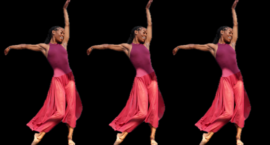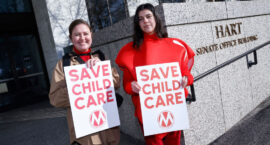
This essay is part of a Women & Democracy package focused on who’s funding the women and LGBTQ people on the frontlines of democracy. We’re manifesting a new era for philanthropy—one that centers feminism. The need is real: Funding for women and girls amounts to less than 2 percent of all philanthropic giving; for women of color, it’s less than 1 percent. Explore the “Feminist Philanthropy Is Essential to Democracy” collection.
In the last two months, the Supreme Court heard two case to limit nationwide access to abortion care. The chaotic state of play for abortion rights in the United States illustrates the consequences of failing to integrate efforts to strengthen democracy into strategies for advancing gender equity and vice versa.
For philanthropic leaders, the twin goals of strengthening democracy and advancing gender equity presents a compelling case for simultaneous investment. Divorcing gender justice from democracy is inconsistent ideologically, and it’s also irrational and unnecessarily expensive. To separate them is to delay success and pay for it many times over.












